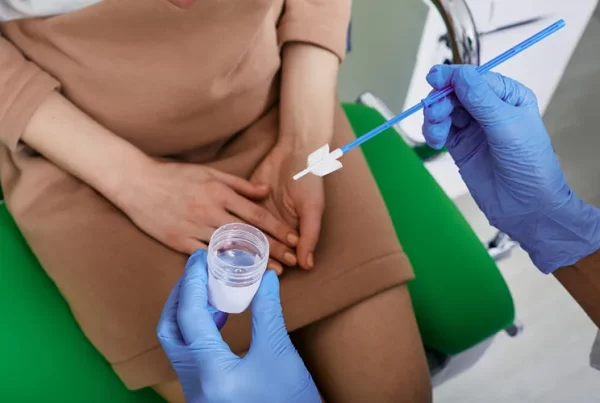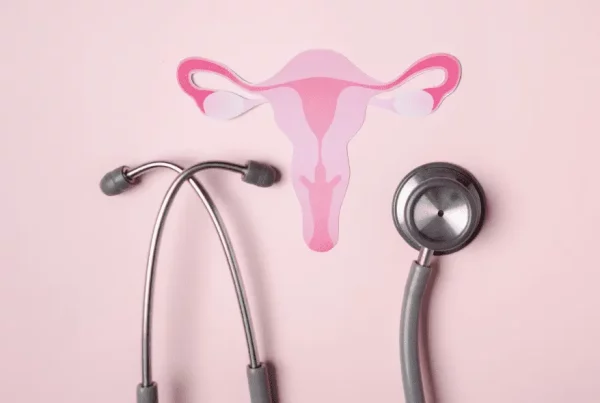Endometriosis can be quite an enigmatic disease to treat. For one, the level of pain may not correlate to the “volume” of disease present, that is to say, a small “volume” of endometriosis may produce great pain while large volume disease (also known as advanced stage endometriosis) may have few symptoms.
It is also a condition where there’s no permanent cure, since its onset is related to menstruation and therefore there is always a chance for recurrence or reactivation throughout a woman’s reproductive life. However, that is not to say that nothing can be done to manage endometriosis.
How can endometriosis symptoms be managed then?
Treatment generally can be divided into medical or surgical methods.
Medical treatment aims to alleviate pain with painkillers, and /or suppress endometriosis and ovarian function with hormones. The drawbacks are that it does not remove the disease, prevents fertility due to suppression of the ovaries, has possible occurrence of side effects and a high relapse rate upon cessation of medication.
Surgery also aims to alleviate pain, albeit through removal of the disease, release of adhesions and scar tissue, excision of deep endometriotic nodules, which have invaded various structures and/or organs, and restoration of the normal anatomy in the pelvis. This means that it can provide a longer lasting resolution of symptoms, enhance fertility and reduce reliance on painkillers. The drawback is that it involves a surgical procedure that does carry risks.
What are the chances of endometriosis symptoms recurring after treatment?
Studies conducted on the relapse of symptoms post surgery for endometriosis show that the recurrence of symptoms can be as high as 20% after two years and 40- 50% after 5 years. However, many are older studies and since then, there have been many advances made both in the diagnosis and treatment of the disease.
Symptom recurrence probably depends on three main factors:
1. Recognition of the extent of endometriosis
2. Extent of removal of the disease during surgery
3. Restoration of the normal relationship of the pelvic organs
Hence, if there is a significant volume of residual disease (endometriosis left behind) post surgery, or if there are areas of endometriosis not identified prior to surgery, or if scar tissue or adhesions are not adequately released – this can lead to symptoms remaining post surgery.
Who is at higher risk of getting a relapse of endometriosis symptoms?
Women with a history of long standing chronic pain or advanced endometriosis may have a higher risk of recurrence and/or incomplete pain resolution. This may be due to long standing stimulation of the pain centres of the brain, which leads to over sensitisation, or due to entrapment of nerves that recurs.
What can be done if endometriosis symptoms come back?
First let’s understand the impact of endometriosis recurrence on fertility. Clinical recurrence is probably more of a concern, especially with regard to fertility. Clinical recurrence most often refers to an endometriotic cyst that recurs in the ovaries. Since every woman is born with a fixed ovarian reserve (i.e. number of eggs) from birth, any inflammation or trauma to the ovary might affect its function. It has been shown that endometriosis by itself, can lead to a lowered ovarian reserve with evidence of tissue scarring and reduced egg count in the affected ovary. It has also been established that ovarian reserve can be affected with surgery for endometriotic cysts. Hence, any cyst recurrence that requires a second surgery is surely going to compromise ovarian reserve.

Recurring endometriosis can impact fertility and your plans for motherhood
Treating the recurrent endometriosis
With recurrence, it is very important to approach the disease with care and caution. During surgery, endometriosis cyst stripping needs to be confined to only the cyst layer and must avoid removing the cyst wall with ovarian tissue as “hostage” to conserve ovarian reserve. For women who suffer from recurring pain, it is possible to try long acting hormonal suppression, unless the woman is very sensitive to hormones and is unable to tolerate the side effects.
If endometriosis mapping reveals significant residual endometriosis (left behind), patients may still benefit from excision surgery. A smaller group of patients with intractable pain might ultimately require a hysterectomy (removal of the womb), especially when there is endometriosis of the uterus (adenomyosis).
Can anything be done to prevent endometriosis symptoms from recurring?
Medically, it has been shown that hormonal suppression with low dose progestogen has been very useful in preventing both pain and clinical recurrence post surgery. A Japanese study¹ showed cumulative recurrence rates of 69% (those who did not take hormonal suppression) vs 4% (those who took the medication) at 5 years. Hence, this is something you should speak to your gynaecologist about.
Lifestyle wise, I would suggest more fruits and green leafy vegetables in the diet, as fibre reduces fat and sugar absorption, which could promote inflammation within the body. Foods with antioxidant properties may also be good, and some might find increasing intake of Omega 3 and 6 fatty acids (e.g. fish oil) and reducing saturated and trans fat helpful. Such food are precursors for anti-inflammatory chemicals in the body. It is also important to take note of gut health, as many women with endometriosis suffer from symptoms of bloating and abdominal fullness. Avoiding gluten and heavy dairy products, switching to a low FODMAP (fermentable oligo-, di-, mono-saccharides and polyols) diet might help, in addition to the intake of probiotics. Last but not least, regular exercise releases chemicals that help the body to relax and this might prove to be helpful for those with a tense pelvic muscle tone.
Conclusion
In many centres that specialise in the treatment of endometriosis, the general consensus is to be as thorough as possible in removing the disease as possible with one surgery, rather than have a few repeat surgeries. It is therefore vital to map and identify all areas of endometriosis so that the treatment options of managing endometriosis are discussed.
The treatment of endometriosis can be a long journey, and can be potentially emotional taxing for women who have an earlier onset of this disease due to the probability of recurrence. However, your gynaecologist will be partnering you along this journey and customise the treatment according to your conditions and needs e.g. fertility and family planning. The advancements in the diagnosis and treatment of endometriosis also means that the chances of achieving a good quality of life despite the condition are significantly improved, boding well for many of the women out there who suffer from this silent condition.
References:
- Ota, Y., Andou, M., Yanai, S., Nakajima, S., Fukuda, M., Takano, M., Kurotsuchi, S., Ebisawa, K., Hada, T. and Ota, I., 2015. Long-Term Administration Of Dienogest Reduces Recurrence After Excision Of Endometrioma. [online] SAGE Journals.[Accessed 18 June 2020].
- Part 1: The Different Faces of Endometriosis
- Part 2: What Your Ultrasound Scan Says About Your Endometriosis
- Part 3: Why Do Endometriosis Symptoms Continue After Treatment
- Part 4: Your Unique Endometriosis Map – An Important Tool for Treatment




